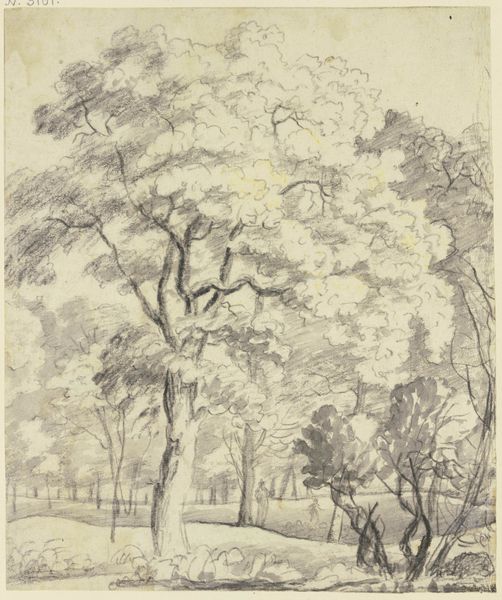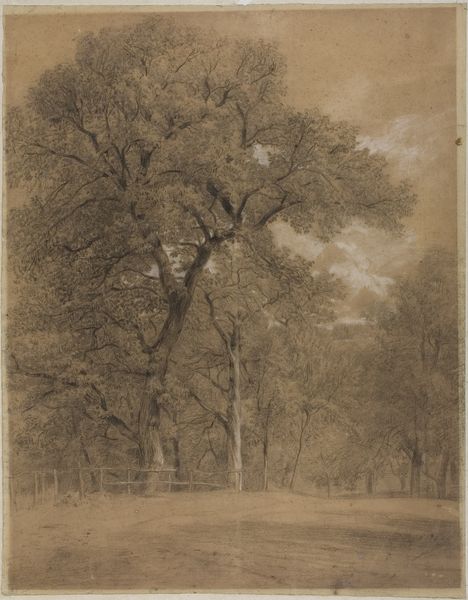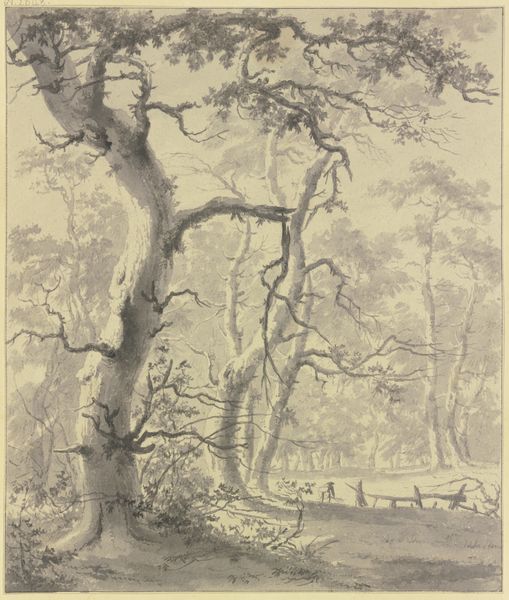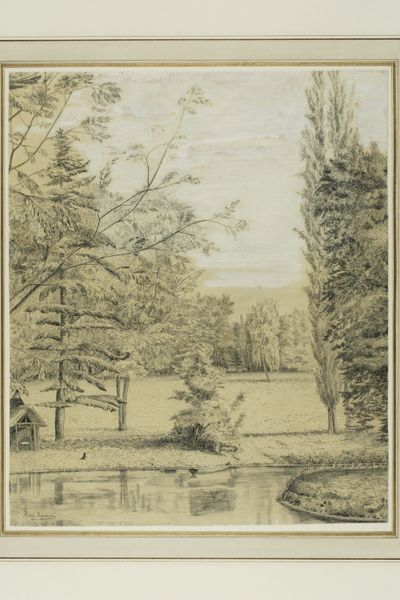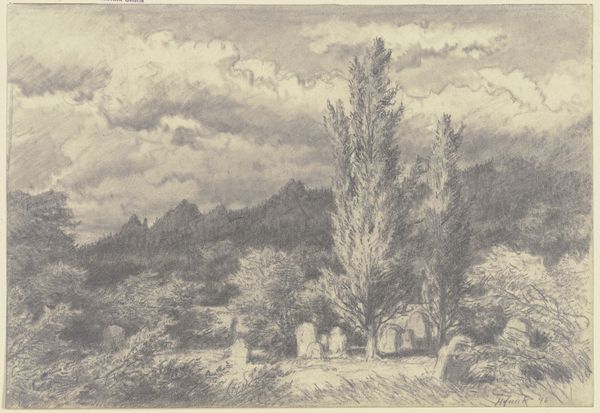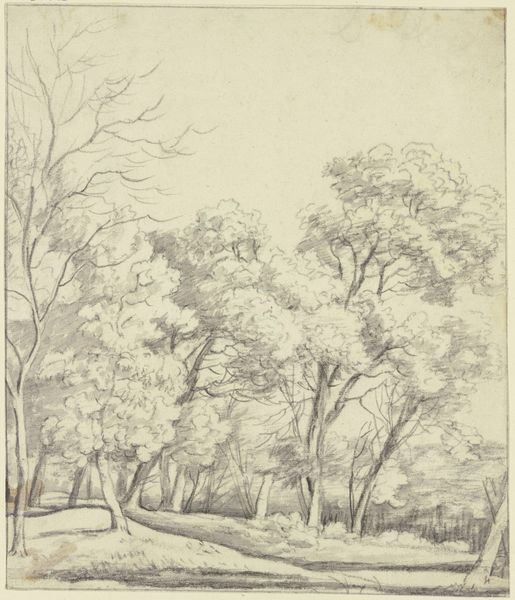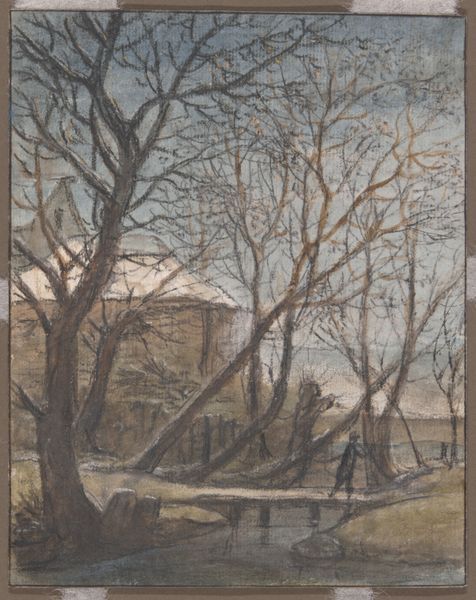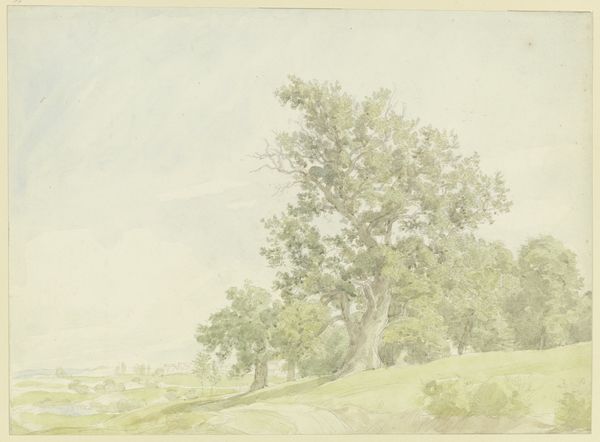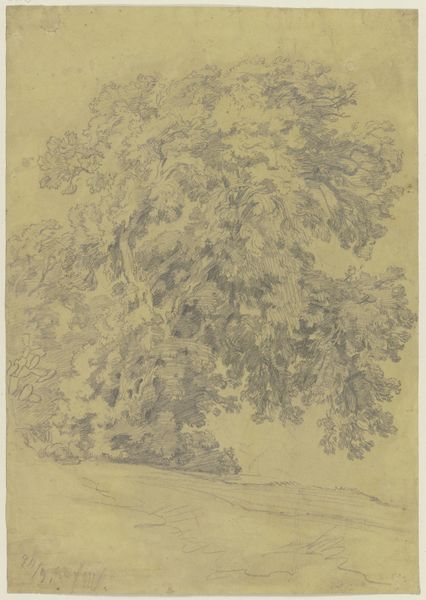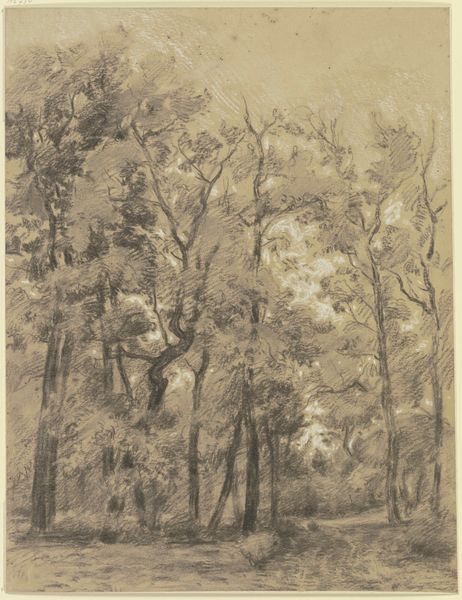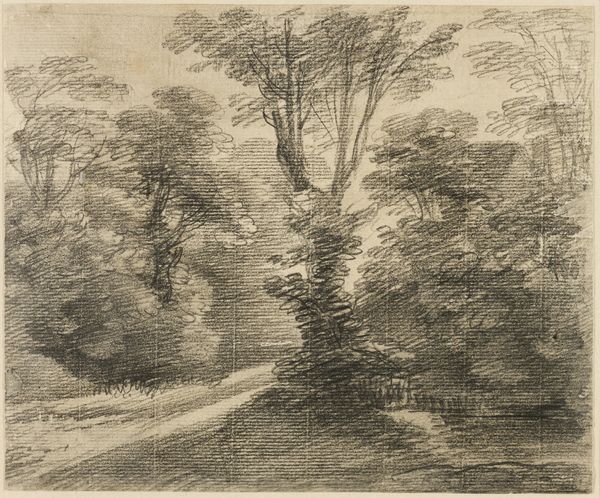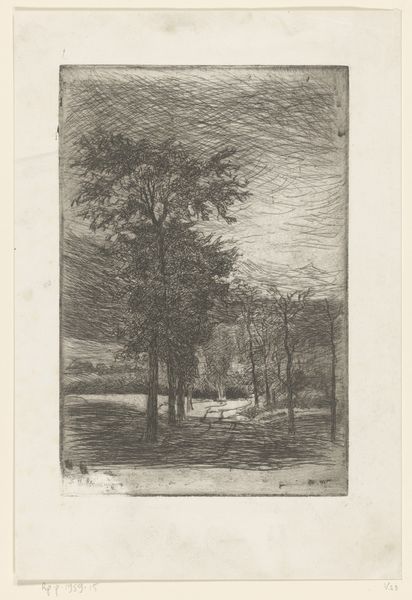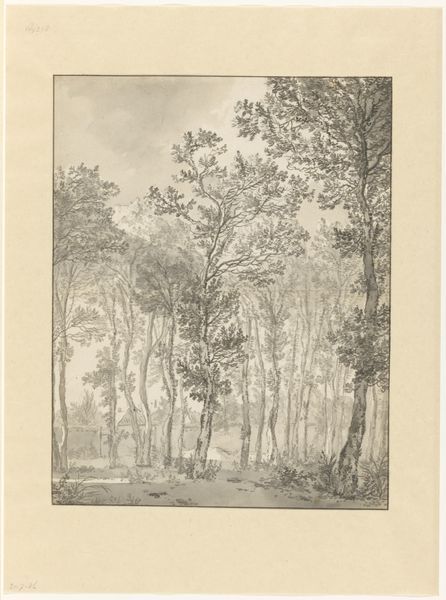
Ein Bach unter Weidenbäumen, im Vordergrund ein Kahn mit zwei Figuren, am Ufer dahinter eine sitzende Figur c. 1790 - 1794
0:00
0:00
drawing, tempera, watercolor, pencil, chalk
#
drawing
#
tempera
#
landscape
#
watercolor
#
romanticism
#
pencil
#
chalk
#
genre-painting
Copyright: Public Domain
Curator: Immediately striking, isn’t it? There’s a quiet solemnity. The figures are almost ghost-like. Editor: Indeed. What we're viewing is a drawing crafted circa 1790-1794 by Georg Melchior Kraus. It's titled "Ein Bach unter Weidenbäumen, im Vordergrund ein Kahn mit zwei Figuren, am Ufer dahinter eine sitzende Figur" which translates to "A Stream under Willow Trees, in the Foreground a Boat with Two Figures, on the Shore Behind a Sitting Figure." A rather descriptive title, don’t you think? Executed with tempera, watercolor, pencil, and chalk, it wonderfully represents the burgeoning Romantic landscape style. Curator: Romantic, certainly. The willows weeping, the obscured figures... water is nearly always a symbolic vehicle, bearing souls or secrets. Here it seems so still, almost reflecting another plane of existence. It certainly tugs at themes of isolation, reflection. Editor: Agreed. Consider Kraus’s context, though. He served as the Director of the Weimar Princely Free Drawing School. Genre painting at the time served more than just aesthetic purposes, Kraus was invested in elevating arts education, shifting social perceptions to broaden what the role of art should encompass in public life, and his association with Goethe's Weimar Classicism. This work exists amidst artistic and socio-political movements advocating for the enlightenment, for reforms to transform society through visual representation. Curator: Yes, and that setting allows further interpretation! The boat—a Charon’s boat across the River Styx? A journey, but to where? It feels imbued with the weight of classical and religious symbolism, filtered through this Romantic lens of individual experience. Even the overcast sky adds to this somber symbolism—an era of turmoil. The light is scarce, creating shadows that make you ponder the mysteries the artist tries to uncover. Editor: Ultimately, whether a literal depiction or laden with deeper meaning, Kraus’s drawing gives insight into how artistic conventions reflected the human state—politically, emotionally—as the 18th century drew to a close. It reminds us how landscapes became stages for internal human dramas. Curator: A silent stage that resonates through time, a very telling snapshot of the soul.
Comments
No comments
Be the first to comment and join the conversation on the ultimate creative platform.
